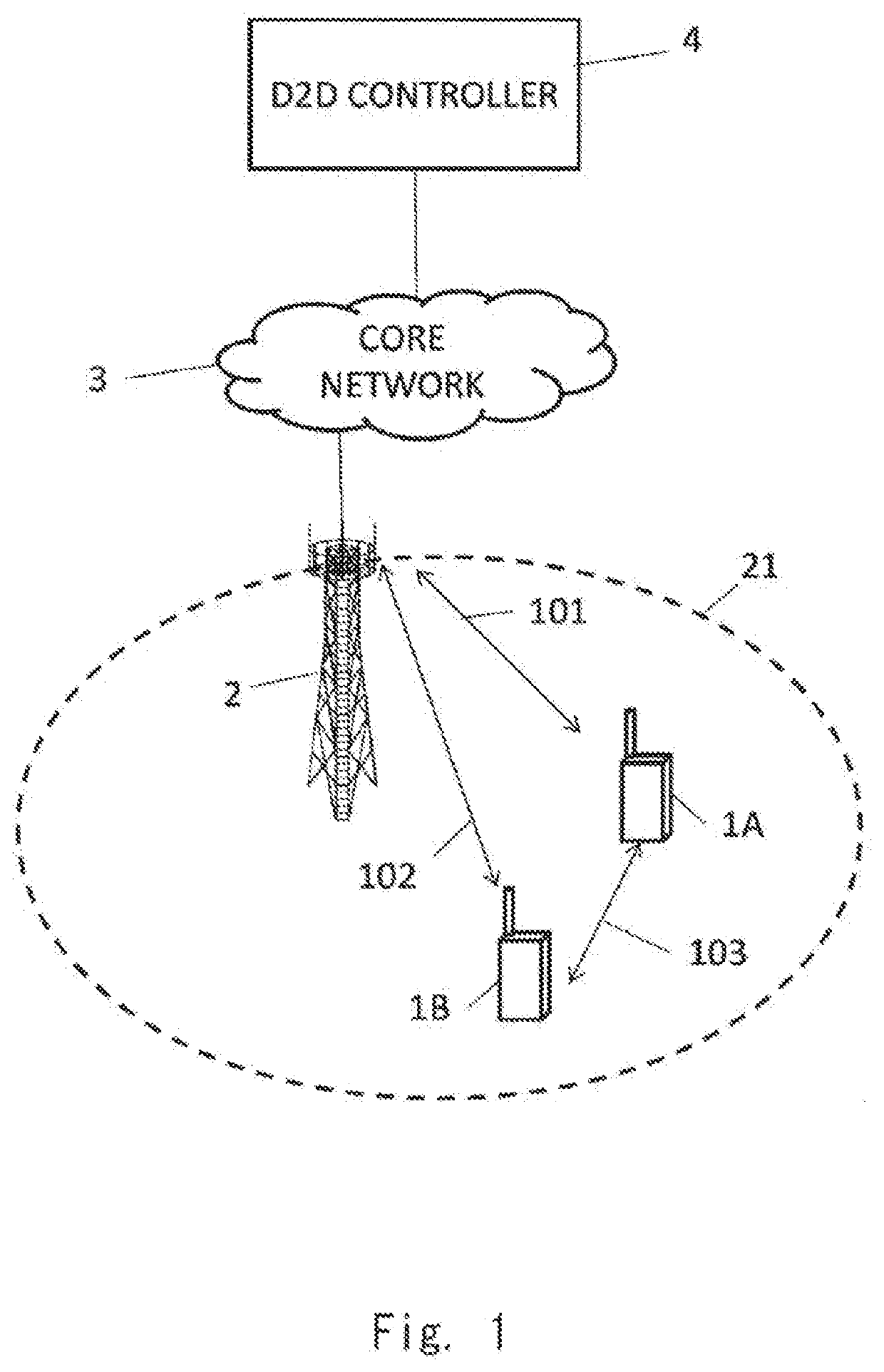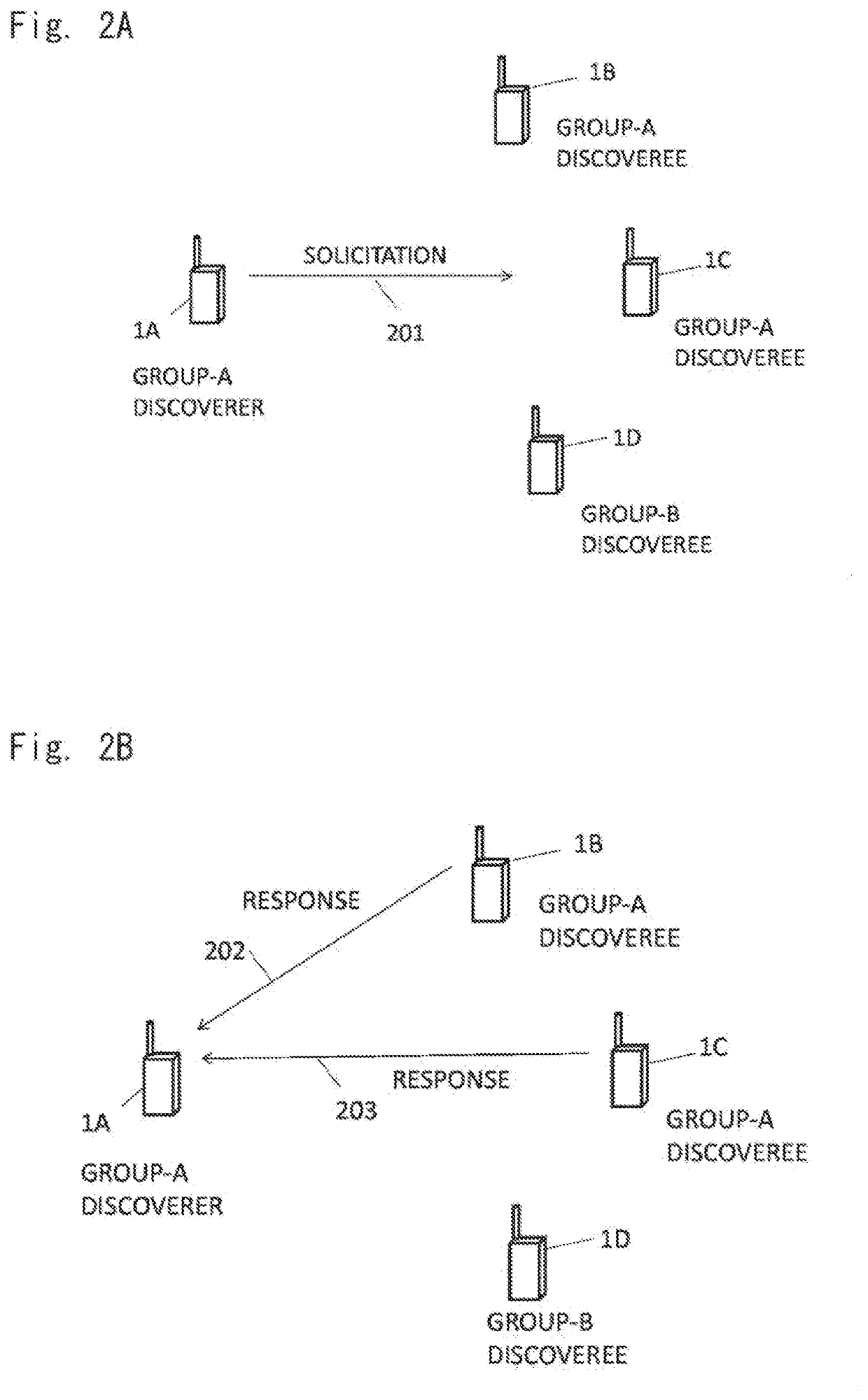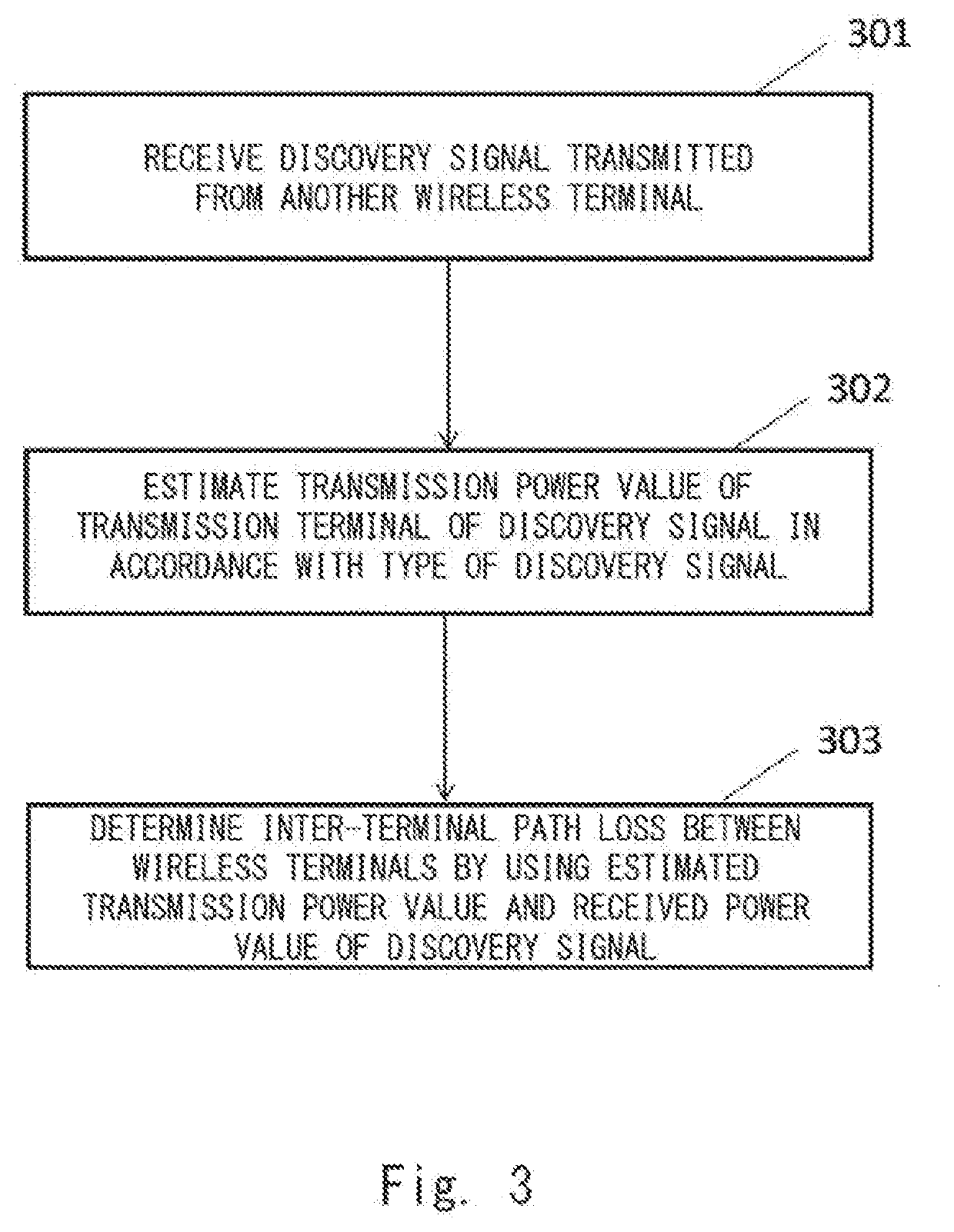Apparatus, method and non-transitory computer readable medium storing program, for wireless communication
a computer-readable medium and program-storing technology, applied in the field of interterminal direct communication, can solve the problems of large in-band emission and large received power
- Summary
- Abstract
- Description
- Claims
- Application Information
AI Technical Summary
Benefits of technology
Problems solved by technology
Method used
Image
Examples
first example embodiment
[0046]FIG. 1 shows a configuration example of a radio communication network according to this example embodiment. UEs 1A and 1B each include at least one radio transceiver and are configured to perform cellular communication (101 or 102) with a base station 2 and perform D2D communication on an inter-terminal direct interface (i.e., PC5 interface or sidelink) 103. The D2D communication at least includes direct discovery (i.e., ProSe direct discovery or sidelink discovery) and may further include direct communication (i.e., ProSe direct communication or sidelink communication).
[0047]The eNB 2 is an entity located in a radio access network (i.e., E-UTRAN), and it provides cellular coverage 21 containing one or a plurality of cells. The eNB 2 can perform cellular communication (101 and 102) with each of the UEs 1 by using cellular communication technology (i.e., E-UTRA technology).
[0048]A core network (i.e., Evolved Packet Core (EPC)) 3 includes a plurality of user plane entities (e.g....
second example embodiment
[0067]A configuration example of a radio communication network according to this example embodiment is similar to that of the radio communication network according to the first example embodiment. In the first example embodiment, a method in which the UE 1B which has received a discovery request signal estimates an inter-terminal path loss when the direct discovery model B is used has been described. In contrast to this, a method in which the UE 1A which has received a discovery response signal estimates an inter-terminal path loss is described in the second example embodiment.
[0068]It is assumed in this example embodiment that a UE 1A functions as a remote terminal and a relay terminal is selected among a plurality of UEs 1 (UE 1B and UE 1C). In this case, as a relay terminal selection criterion, it is possible to select a UE 1 having a small inter-terminal path loss. The smaller the inter-terminal path loss is, the more a throughput (a throughput of the side link) of a D2D communi...
PUM
 Login to View More
Login to View More Abstract
Description
Claims
Application Information
 Login to View More
Login to View More - R&D
- Intellectual Property
- Life Sciences
- Materials
- Tech Scout
- Unparalleled Data Quality
- Higher Quality Content
- 60% Fewer Hallucinations
Browse by: Latest US Patents, China's latest patents, Technical Efficacy Thesaurus, Application Domain, Technology Topic, Popular Technical Reports.
© 2025 PatSnap. All rights reserved.Legal|Privacy policy|Modern Slavery Act Transparency Statement|Sitemap|About US| Contact US: help@patsnap.com



